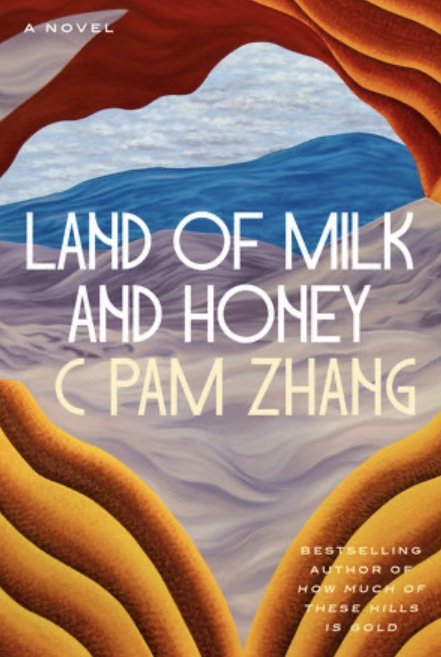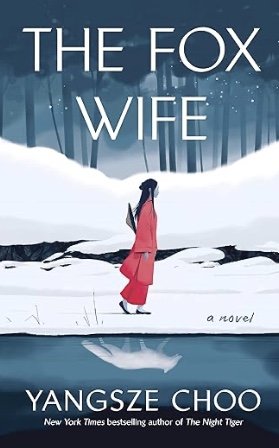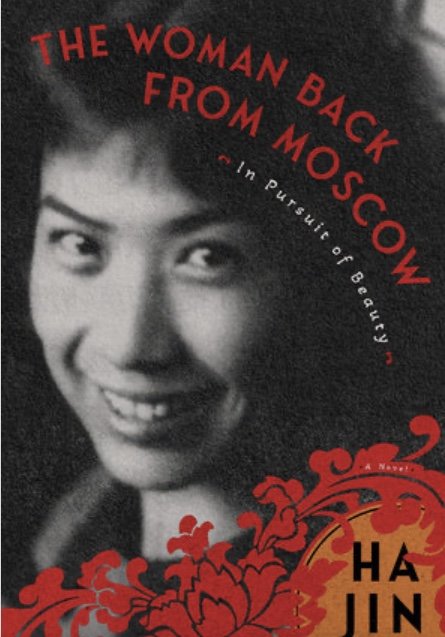Land of Milk and Honey by C. Pam Zhang (Riverhead Books)
A cook, an exile, and “a hungry ghost, adrift,” a young Chinese American woman working in a London restaurant reads an advertisement for a “private chef in an elite research community.” Tempted by the thought of “one last taste of green” in a world that’s been overrun by grey—the pervasive smog that has killed crops all over the world and the grey mung bean flour that has become a nutritional staple—she lies about her work experience and enters what’s known to its envious neighbors as the land of milk and honey.
Set on an Italian mountaintop that defies the smog with bright bursts of sunlight, this is a place where food crops are bioengineered. When the young cook enters her workplace for the first time, she walks into a kitchen that is a “vessel of light” and the first food she tastes are strawberries that turn her mouth into “an orchard in the sun.”
She finds a bounty of ingredients to work with, food that’s vanished from every other part of the world, “a passage back through time.” With it she cooks elaborate menus that are only for practice, with nobody but herself to eat them. Her body rejects the richness of the meals she makes and, in a world that’s besieged by famine, every night she throws away all of the luscious food.
“I’d read the fairy tales,” she says, which means she recognizes the Bluebeard quality of her employer, a man who forbids her to leave the grounds of her workplace while promising her, “You may cook protected from the world’s distractions.” However a distraction finds her in her isolated state. Her employer’s daughter, Aida, brilliant, beautiful, and cynical, becomes her companion, friend, and lover.
Presented with a role to play at banquets where her employer feeds potential investors, the cook takes on an eerie persona, a silent woman dressed in white, who pretends to understand no spoken language and prays without words at the end of every meal. She’s a necessary component to her employer’s plans. He tells her, “They dislike me. Nor do they like Aida.” Posing as the employer’s former wife, the cook takes the vanished woman’s name, Eun-Young, and provides “an unimpeachable public image.” In return, her employer pays her a sum that will clear all of her considerable debt, so, she says, “I signed myself away.”
C. Pam Zhang has followed up her stunning debut novel, How Much of these Hills is Gold (Asia by the Book, March 2021) with an equally breathtaking work of imagination. Blending an apocalyptic future with a fantastic culinary world that’s rich with poetry, Zhang’s sentences sing with unexpected lyricism, burnishing the world that we live in today with a glow of miraculous good fortune.
Her unnamed central character tells her story with wit and bitter truth. “It’s always been easy to disappear as an Asian woman…The woman I was to become was…a hollow, a receptacle, a mirror held at a flattering angle.” She views her employer with an unsparing eye, describing him as a vulgarian who disguises himself with orange self-tanning cream, “a man who studied pleasure” but derives no enjoyment from anything but humiliating others with his wealth and power. On a dying planet, he milks other wealthy men for the money he needs to safeguard those who are on his list and the money’s forked over by those who want to be on it.
A love story, a dystopian nightmare, a celebration of the bounty we take for granted everyday along with a tribute to life in all its messy and chaotic creativity, Land of Milk and Honey pierces the present to unveil a dubious future, while never releasing its grip on hope. “In certain lights,” Zhang tells readers, “ the past and present are indistinguishable.” Perhaps the future is as well.~Janet Brown



















